This sponsored column is written by the team at Arrowine & Cheese (4508 Cherry Hill Road in Arlington). Sign up for the email newsletter and receive exclusive discounts and offers. Experience Arrowine’s Tastings & Events. Have a question? Email thenose@
Happy February!
We’re two months into the new year and Valentine’s Day — less than 24 hours away — is a time for romance, chocolates and best of all, Champagne. But specifically, Grower Champagne like Champagne Bauser.
Kicking your taste buds and with Special Bottling, Champagne Bauser is now available at Arrowine. Just in time for Valentine’s Day!
How did Champagne Bauser come to Arrowine? A little bit of backstory from Doug Rosen himself…
I was hunting for Champagne from the tiny Village of Les Ricey (the home of Marie and Olivier Horiot, whose Champagnes are the best-known, highly allocated, and twice the price. We have a few right now.)
Les Ricey was a favorite source of Champagne for Louis XIV. It is located at the southern end of the Côte des Bar, far removed from the big-name Champagne Houses in Reims, etc. But this sleepy corner of Champagne is a favorite source of grapes for the “Big Gun” Champagne Houses.
Les Ricey’s Champagnes are richly flavored, extremely mineral (for Pinot Noir,) and very Burgundian. Considering how close Les Riceys is to Chablis and that it enjoys the same Kimmeridgian soils, it should not be surprising.
With such a high demand for Les Ricey fruit, few producers and far fewer Estate Bottlers export to the United States and command hefty price tags when they do. But not at Arrowine. At as low as $44.99 a bottle, Champagne Bauser is a “stupid good” and a steal! Don’t drink this standing up; you might pass out from pleasure.
And don’t forget the chocolates and cheese! What’s Champagne on Valentine’s Day without the cheese, charcuterie and chocolates?
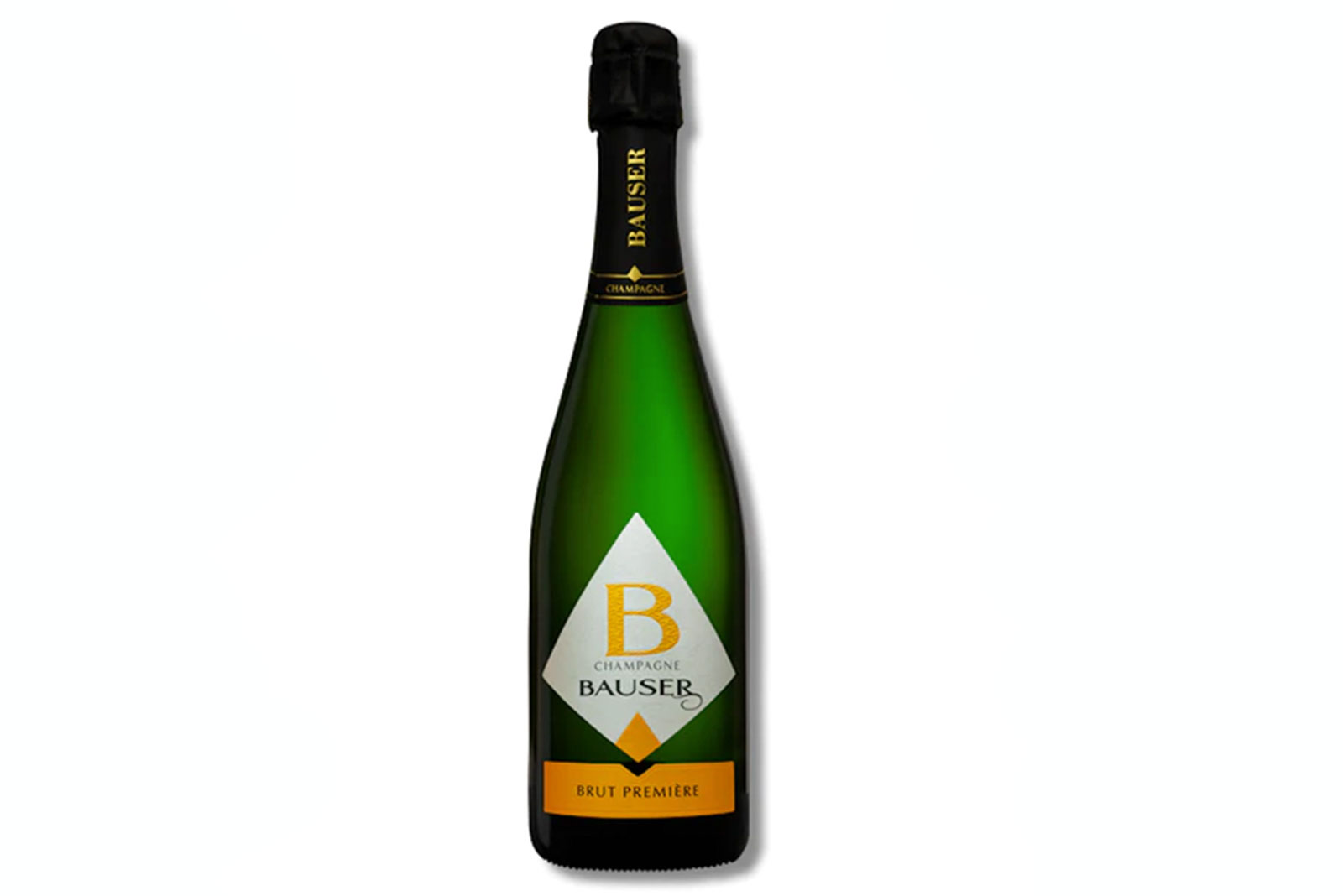
This sponsored column is written by the team at Arrowine & Cheese (4508 Cherry Hill Road in Arlington). Sign up for the email newsletter and receive exclusive discounts and offers. Experience Arrowine’s Tastings & Events. Have a question? Email thenose@
Can we talk?
This column is an advertisement and an instrument to generate interest and, hopefully, revenue. But it’s more than that to me. For those of you who know me, my work, and Arrowine, you know I hate bu**sh**.
I’m no spring chicken, and the reality of turning sixty-five this June boggles my mind and scares me in many ways. So I ask myself that age-old question, where did the years go? My father used to say, “one day, you are going to wake up, look in the mirror, and not recognize who you’re looking at!” And that day has come and in spades.
That leads me to my next rant, retirement. And do what? Play golf? Move to the beach, or heaven forbid Florida? I sooner walk in front of a bus. I can’t afford to retire, anyway. Part of it is my fault. And let’s not forget the last three years have been unmitigated hell. Doing the right thing can be expensive. It can drain your bank account but not your conscience.
Thankfully, COVID-19 is waning, but it sure is alive and well with me. And it’s just the beginning. We are witnessing the largest shifting and realignment of the post-Great Depression economy. Just look around you. How many businesses failed? How many people lost their jobs and everything at no fault of their own? It was an economic Tsunami. And let’s not mention over one million Americans died before their time. So what did we as a nation and society learn from this? Not much, and it scares the hell out of me.
In my naivety, I thought it might bring our fractured nation closer. Our differences would pale in comparison to saving lives and respecting our neighbor’s health and well-being. But it did exactly the opposite!
A pandemic is inconvenient, expensive, and a first-rate pain in the ass. We didn’t ask for this! But science is science, one plus one equals two, and yes, we did land on the moon. So in a crisis, in a war, you do what you must do, not what is expedient or easy.
You do what is right, what is moral, and honorable because anything less is undignified and selfish. I will have to work a bit longer or maybe until I drop, but that’s how it is.
Arrowine isn’t my work. It gives me purpose and pleasure. It is who I am, and I love it! There are days, weeks, months, and years of aggravation, challenges, frustrations, and uncertainty, but it’s who I am. G-d and my loved ones give me strength, but you motivate me. So, thank you for that.
In return, I promise to give you my very best, I sincerely thank you for sticking by us through thick and thin, and I sincerely appreciate it.
That leads me to what matters, the future. We have looked long and hard at what we were doing and how we did it. With the help of our entire staff, we are retooling, refining, and re-creating Arrowine. So we are getting rid of what didn’t work to add value to your shopping experience and to ensure that we are a part of this community for many years to come. Our best is yet to come!
Thank you for reading this,
Doug Rosen, Shem Hassan, Ayet Boudjellal, and the entire Arrowine team
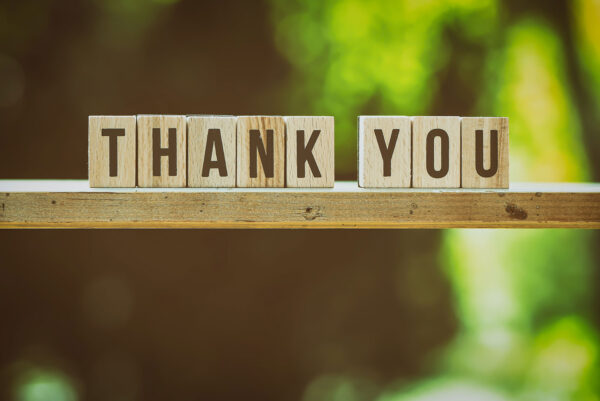
This sponsored column is written by the team at Arrowine & Cheese (4508 Cherry Hill Road in Arlington). Sign up for the email newsletter and receive exclusive discounts and offers. Experience Arrowine’s Tastings & Events. Have a question? Email thenose@
Hello my friends,
Please excuse my absence during the holiday season. I’m back, well sort of, I’m in Paris concluding my annual “French Death March.” Well, it was annually up until three years ago. Now I can hear you all saying, “Oh that’s rough! Can I carry your bags?” It is usually the comment that follows.
I flew via Amsterdam to Montpellier, France. The Schipol airport is enormous. Luckily I had an eight-hour layover, so there was no need to rush. But, despite the enormity of the place, you can’t find a cup of coffee at 6 a.m. anywhere. So I had to settle for a Heineken, and I thought the Dutch were “coffee people.” So after cooling my heels for eight hours desperately trying not to fall asleep, at the shop-worn bar, in my “get the hell out of my Country Termial,” I was raring to go, albeit exhausted. No glamour here, folks.
Montpellier has been the home to Millésime Bio since 1991, and you guessed it is all about organic wine. It is the place to meet, taste and visit with winemakers who work organically, as most of mine do.
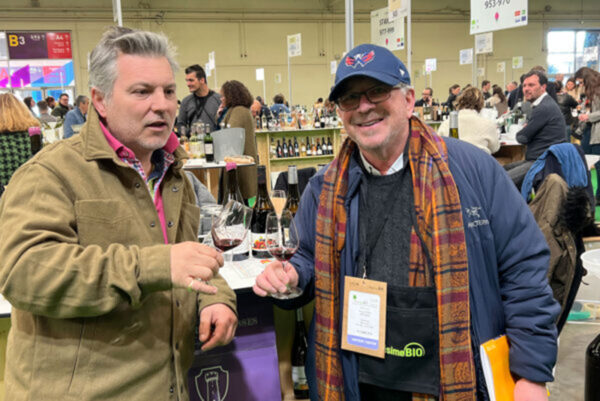
It was great to see old friends and have the opportunity to ferret out some “new and interesting” players. The fair is only two days long, and there are also several “off” tastings (located in different venues) before and during the fair. Folks who can’t afford or choose not to participate in the fair seize the opportunity to steal attention while everyone is in town. I stick to my agenda to save precious time.
That was a wise move, and I found some fabulous new winemakers. On the first day, I potentially bagged five. But it’s more challenging than it sounds. You must taste a lot of uninspired, sometimes technically flawed crap to find a winner. But I am always on point and excel at sizing up a winner with just a glance.
I headed to Paris to embark on Phase 2 in Angers, the Salon des Vins de Loire. So why go back to Paris? Driving the 7-plus hours is the only “direct” way to Angers from Montpellier, and the trains take just as long, especially when you are schlepping 2 1/2 weeks’ worth of luggage.
The Loire Salon is my sentimental favorite. The Salon has shrunk over the years. What was once three large halls is now one. And that includes the Bio-Dynamic growers certified by the Federation Demeter International. Biodynamics viticulture goes back to ancient earth healing techniques, with all the processes performed in conjunction with the lunar calendar. So let’s say organic “on steroids.” That was the best I could come up with, but you get the idea.
Like Millésime Bio, there are also “off” tastings. The Salon St. Jean at the Greniers St. Jean is an excellent tasting, started over twenty years ago by winemaker Nicolas Joly, who wrote “the book” on Biodynamics. Based on the works of Rudolph Steiner in 1924, Joly is responsible for bringing Biodynamic practices to the forefront of viticulture, changing the course of winemaking and wine worldwide.
And there is the infamous Dive Boutteille Natural Wine held in Saumur at the Caves Ackermann, and I mean caves. I pass on that one. The caves are cold, dank, and dark. It is impossible to taste well under those conditions. There are good wines with many fine growers, but no thanks.
Wine Paris and Vinexpo start on Monday and run till Wednesday. So I’m here in Paris getting myself ready. Bring it on!
Cheers,
Doug Rosen
This sponsored column is written by the team at Arrowine & Cheese (4508 Cherry Hill Road in Arlington). Sign up for the email newsletter and receive exclusive discounts and offers. Experience Arrowine’s Tastings & Events. Have a question? Email thenose@
Welcome to the final installment of the “so you want to make wine series” or “what was I thinkin?” So today, we will finish with the maturation process of red wine. And, of course, a delicious suggestion for your table.
Any winemaker worth his salt vinifies every parcel and varietal separately. That allows you to dial in and elevate the quality of every Cuvee you make.
Some parcels are better than others or different. The easiest way to create several wines at several price points is to declassify some. The “Grand Vin,” or first wine, is the best of the best. Take Chateau Latour. Only the very best barrels go into “Chateau Latour.” The second wine, “Les Forts de Latour” is the next best and, finally, a wine they call “Pauillac.” All are good, and some barrels and parcels are less complex. You can kill two birds with one stone, elevate your “Prestige” wine and offer a slightly less complex wine for less money or create something just as good but different.
To get the wine in the bottle, you first must homogenize all the components into one cohesive unit. But there are still more decisions to make before bottling.
The use of sulfur and how much to use can get complicated and controversial. There is a misguided movement to reduce added sulfur to ridiculously low levels. But you can’t make wine “stable” without a reasonable level. Wine without sulfur is a crapshoot. The slightest residual sugar can spontaneously referment, bottles explode, cork pop, or if it gets here in one piece, it’s fizzy. Winemakers compensate for reducing sulfur by increasing the inert gas they add at bottling, and it’s the wrong approach.
It’s table wine, and it shouldn’t be petulant. Decanting a “still wine” to air is okay, but de-gassing one is nonsense. I’ve opened many a bottle, and it’s bubbling like a Coke! Then you must put your hand over the top, shake the hell out of it, release your grip, and hear the POP! It can take several tries to get rid of all the gas. That’s not great for table service, nor is it sensible. And it reduces the aging potential.
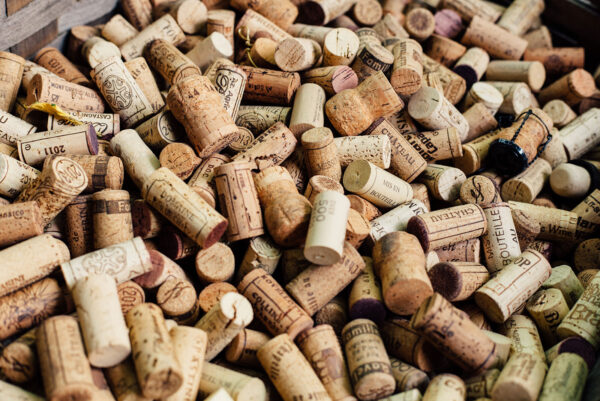
Next, what closure will you use? Natural cork (my choice), composite cork (crushed cork glued together), synthetic cork, or a “screw-cap.” Each kind of closure has benefits and problems. I’m a traditionalist. I will always choose a traditional good-quality cork. I know how it performs, and I’m happy to accept the minuscule failure rate. It’s part of the game.
This week’s star is a “Real Eye Opener.”
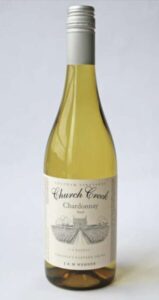
If you want to see just how far Virginia wines have come, look no further. The Washington Posts Dave McIntyre proclaimed: the 2020 Chatham Vineyards Church Creek Chardonnay ‘Steel’, “a great value” and “…an outstanding Virginia Chardonnay that’s worth seeking out.” And Dave got it right!
Here is a Chardonnay that kicks butt, a game-changer! And it’s from VIRGINIA! Be proud, people! Support your state.
This wine floored me. And it is nothing like any California Chardonnay anywhere near its price! It is the spitting image of a Village-level Chablis, dry, with excellent palate-cleansing acidity, delicious lemon butter and sea-shell flavors, and a stone-dust mineral finish. Try finding anything this good from anywhere in the U.S. at its price of $22.99. You can’t!
Hat’s off to Jon and Mills Wehner for making such an outstanding and affordable Chardonnay. Jump on this one — the wine disappeared after the Washington Post review hit. Jon was kind enough to save me his last 30 cases, as we had supported it long before the Washington Post discovered it.
Cheers,
Doug
Photo (top) by Elisha Terada on Unsplash
This sponsored column is written by the team at Arrowine & Cheese (4508 Cherry Hill Road in Arlington). Sign up for the email newsletter and receive exclusive discounts and offers. Experience Arrowine’s Tastings & Events. Have a question? Email thenose@
I’m trying not to bore you by getting too technical. But it is critical to your enjoyment of wine to understand how straightforward yet complicated wine-making is.
Something to keep in mind: remember, in grade school, the three reading groups? Accelerated, on-par, and the group needing extra encouragement and or attention? Let’s say you were born in the Village of Pommard. Of its 300 souls, the vast majority have something to do with the wine trade. If you are lucky enough to be landed and the offspring of a wine-producing family, guess what you will do as a career?
Now go back to my grade school reading group illustration and think about it. Wine-making is one of the world’s most complex occupations, and if “Jean-Claude” isn’t in the accelerated reading group, Mom and Dad may start to worry. They might decide to sell the Domaine. But there goes the “family legacy.” A legacy can be a burden.
Now back to decisions that must be made, often on the fly and under duress. The growing season determines everything. First, do you inoculate with a select strain of laboratory-cultivated yeast (a sure thing, but it imparts a “flavor profile”) or use the indigenous yeast from your vineyard?
If you work organically or biodynamically, you have been cultivating your native yeast population to the point that it should be healthy enough to carry the fermentation to complete dryness. But there are no guarantees. I think native yeast is more transparent and yields a more complex wine. If you bottle and have unresolved sugar, the wine could become “sparkling wine,” or the bottles might explode!
The all-important maceration time with juice on the grape skins isn’t something you can look up on Wikipedia. You have to make the call: too much extraction and the wine is coarse, too little, and it’s wimpy. So you want to pull the wine off and press at the sweet spot. Then off to your barrels.
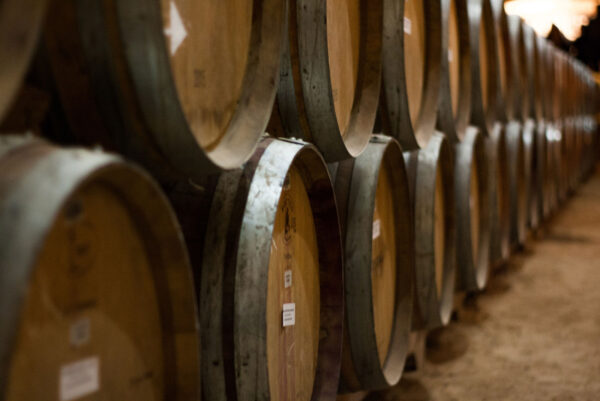
New wood is expensive, as much as $1,200 or more per barrel. Most of my folks are at a 20-33% rotation, meaning you replace that percentage of your barrels yearly. And not all barrels are the same. The forest dictates the kind of oak, the tightness of the grain, the porosity, and the actual “flavor” profile. You can even request a certain toasting level or degree of internal char. Decisions, decisions.
Most winemakers experiment with anywhere from two to five or more barrel makers until they are satisfied with the mix and the results. And you better be friendly with your barrel maker or broker, or you could end up with the barrels that were going to go to Outer Mongolia.
Once the wine is in the barrel, you monitor its progress through alcohol (we are talking about a fine wine here) and then malolactic fermentation. I will explain the difference at a latter-date.
So let’s see, you have many barrels in the cellar, 200? Guess what you will be doing? Tasting, topping off every barrel regularly, and being vigilant. You watch every barrel like a hawk, tasting, smelling, and testing for and fixing any problems.
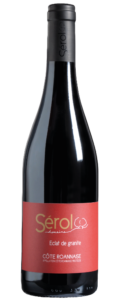
Wine of the week, you asked for an Autumnal suggestion, and boy, do I have a delicious one.
- 2021 Domaine Serol Eclat de Granite Côte Roannaise — $24.99
I adore this wine, and it will surely be on my Thanksgiving Table! With 1/2 hour of air, Eclat exhibits a super-sexy silkiness. Its 100 Gamay is an absolute joy to drink. It pumps out ultra-pure flavors of raspberries, strawberries, and mineral spice with a long palate cleansing finish. It’s brilliant!
Cheers,
Doug
Photo (top) by Vince Veras on Unsplash
This sponsored column is written by the team at Arrowine & Cheese (4508 Cherry Hill Road in Arlington). Sign up for the email newsletter and receive exclusive discounts and offers. Experience Arrowine’s Tastings & Events. Have a question? Email thenose@
So you want to make wine?
So you think you want to make wine?
What were you think’n? It’s 4 a.m., time to get to work. So you spent a month checking your parcels, monitoring ripeness by tasting berries to select or the perfect moment to harvest. A sudden forecast of rain sends shivers up your spine, sending you into over-drive to pick as fast as you can if you find people crazy enough to join you.
Armed with shears, working in oppressive heat, roasting under the hot sun, you carefully select only the ripest bunches as you swat mosquitoes; bees buzz swirling around you, only to land on the bunch you are about to grasp. You must continuously bend, stretch, and contort yourself while gently tossing a season’s worth of work into plastic bins. You schlep the countless plastic containers full of fruit while some escaping juice runs down your legs as you run to the receiving truck.
Alley up, throw them up to the unlucky harvester who must have pissed someone off to get stuck on the truck all day long in the scorching sun, humping plastic lugs full of grapes, bees, and what have you. Back and forth until your arms numb, and it’s just 9 a.m. Thank G-d it’s 9 a.m.
Time to stop for “casse-croute” or the French version of a “coffee break in the vineyard.” Bread, cheese, salami or pâte, and of course, a little liquid sustenance, i.e., wine. Just like the office. A quick snackeroo, and back you go!

The fruit arrives at the winery. So you undo what you just did. Thankfully you are after twenty or so bee stings; you hardly feel them. But at least you are given a cot to sleep on in an unairconditioned barn, attic, or old kitchen with 20 strangers. But the food is good, and there’s plenty of wine.
Time for “triage” or sorting the fruit either by hand or with a fancy vibrating table that does it for you. The aim is to remove any malformed, damaged, or unhealthy clusters, even down to individual berries, along with any leaves, bugs, and the occasional cigarette butts.
Many growers refrigerate the fruit for 8 to 12 before fermentation to preserve freshness. Then off to the de-stemmer, where the bunches are relieved of their berries. So from here on, we are talking about the fermentation of red wine.
Decision number one, do you destem, all or partially or entirely? Under-ripe or vintages with less than perfect fruit are usually wholly destemmed — no need for unripe raspy green stem tannins. If the stems are mature, fermenting a portion of “whole clusters” is an option. Adding stems brings complexity, but be careful of the proportion you use. Stems are also a source of tannins.
The crushed grapes, juice, and skins head into a vessel of the winemaker’s choosing (I’ll talk more about this next week) to settle and macerate. The temperature can be controlled by using refrigeration. Cold retards the yeast activity. You don’t want the juice to ferment straight away. This maceration also has the benefit of reducing the sulfur needed to keep the demons away.
The time that the skins are in contact with the juice is critical. Think of making tea; the more you seep, the more color and tannin you extract. Healthy, clean skins allow for extended mingling in juice with great benefits. The skins are the aromatic heart and soul of the wine.
Everything comes from the skins (in reds.) The winemaker decides when the “right” level of extraction has taken place, and then it’s off to the races — more about that next time. If I’m “nerding out,” please tell me!
Cheers,
Doug
Photo by Thomas Schaefer on Unsplash.
This sponsored column is written by the team at Arrowine & Cheese (4508 Cherry Hill Road in Arlington). Sign up for the email newsletter and receive exclusive discounts and offers. Experience Arrowine’s Tastings & Events. Have a question? Email thenose@
What if, during your life, you could only practice your chosen profession 45 times? Well, that’s winemaking! Think about it: 45 times, that’s it. And you have to get it right each time, no matter the circumstances. Mother Nature is rarely consistent, perhaps never. Every year a winemaker has to make an enormous amount of decisions based on what the vintage gives them to work with.
Let me explain: we discussed the notion of “terroir” before. A “successful” wine must transfer or speak of the place it is from; that’s the whole enchilada, nothing less, or why drink wine in the first place?
We choose a particular varietal, a Pinot Noir or Sauvignon Blanc, from a “specific place” with an expectation of what it will taste like and how it will work with a particular food or moment. But how do we form these expectations?
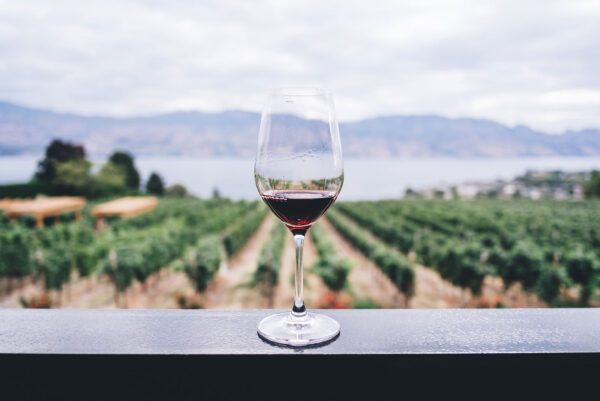
The winemaker’s job is to seamlessly get the land’s soul into the bottle without screwing it up. And, to capture not just the particular varietal or blend but to bottle “the vintage,” to pleasantly give you the flavors or expression of that particular growing season, that is the Art, my friends! And great winemakers embrace this challenge.
They know they are working with a product that doesn’t lend itself well to intervention, manipulation, or strongarm tactics. As a winemaker, you listen to the grapes, they don’t listen to you. No matter what you could do to change the nature of the fruit (technology today allows for this, lipstick on a pig), a cosmetic. Trying to change the soul of the wine is a fool’s errand.
I took 25 clients on a river cruise five years ago. I planned each visit, and when I sat back and looked at each winemaker I selected to visit, women ran 80% of them! Some of you might disagree, but I believe women are better suited for making wine. Women seem to approach winemaking from a more cerebral, nurturing perspective. They are more apt to deal with the realities of the vintage, to let the vintage speak, allowing the wine to be what it is intrinsically, and not forcing it to do or taste as they “think” it should. Perhaps it has something to do with maternal instincts. I’m not a psychologist, so I can only guess.
Now for the nitty-gritty, decisions, decisions. It all starts with picking the harvest date. The hard and fast rule is harvest takes place 100 days after flowering. But it’s not that easy; here’s why; when I started in this business 45-plus years ago, “Brix” were everything. People harvest according to the sugar content of the fruit. Winemakers squished a grape, placed the juice on a refractometer, and read the sugar content of the juice. That told you the potential alcohol level, and when you hit “your number,” you picked. Today winemakers get more up-close and personal. They go into the vineyards weeks before the harvest and observe.
They examine the stalks. Are they ripe, woody (overripe), shriveled, or green and healthy? Then they look at the all-important skins (healthy mature skins are everything in making red wine, especially). Grape skins are the primary source of tannins, allowing the wine to age gracefully. The all-important skins also contain phenols or compounds that enable the wine to develop complex aromas. Are the skins ripe and not bitter when you bite into them? Are they fragile, easily broken, damaged, or sunburned?
Then comes tasting the entire berry, not just for sweetness but maturity; the skins, the flesh, and the pips. Then you are ready to go, or maybe not? More on that next week!
Cheers,
Doug
This sponsored column is written by the team at Arrowine & Cheese (4508 Cherry Hill Road in Arlington). Sign up for the email newsletter and receive exclusive discounts and offers. Experience Arrowine’s Tastings & Events. Have a question? Email thenose@
Hello again! So, many of you participated in our cleaning the glass experiment? Shocking, isn’t it?
Now you are on your way to better-tasting, terrior-driven wine. And what do I mean by that?
Well, it’s a little complicated, but I do my best. The only reason to drink wine is for pleasure, period! And that means more than just “it tastes good.” A well-made wine is a companion, a friend, sometimes an antagonist, but always a good conversationalist. So it must speak eloquently of its birthplace. When tasting it, I need to recognize the lineage, that exact spot on the globe.
Unlike our ancestors, drinking wine today is an option, not a necessity. We don’t need wine anymore to survive. Fresh water is abundant, so wine is now optional. We don’t drink wine to live. Instead, we drink fermented beverages because they enhance our culinary experiences and please us.
What gets to me is no one talks about wines’ dirty little secrets. Sometimes, I feel like Frank Serpico; I just dated myself, but I love classic movies, so who cares? It’s a good analogy. When did speaking the truth become a liability? We are talking about wine, not national security. I don’t tolerate lazy, sloppy, or greedy winemakers. If you care, you are vigilant and proactive. We deserve a clean wine that speaks to us.
Today’s wines are cleaner and fresher than we drank forty years ago. And they should be. When you embrace science, you preserve terroir, which means uniqueness. Modern science allows a bottle of wine to reflect the exact spot it came from. So a well-made wine speaks to and talks to you like you have been there.
If a wine doesn’t smell and taste like fermented pure grape juice, meaning “grapey,” you have a problem! Wine is NOT supposed to smell like leather, mushrooms, wet-basement, barnyard, burnt tire, green pepper, bandaid, cloves, nail polish, green peppers, or dirt! But, if it does run, I will expand on the causes of faults in a future column.
There are tricks of the trade that remain “trade secrets,” and that’s a problem. For example, did you know your California Cabernet, Chardonnay, or Zinfandel can be technically sweet? The question I’m most frequently asked is, is it “dry?” Well, that depends, and it’s not as simple a question as you think.
Table wine should be dry unless the cuisine has a note of sweetness, which I’m sad to say is far too prevalent today. A winemaker can leave unfermented sugar in the wine to make it easier to drink — think Kendall Jackson Chardonnay, it was deliberately bottled with a slight but perceptible amount of residual sugar to make it appealing to the masses.
Classic European cooking has little, if any, sweetness. Therefore a dry wine is needed. A New World wine is in order if there is any hint of sweetness. Wines from the New World tend to be higher in alcohol from all the sun. Thus energy the vines receive. In the New World, we plant for “commercial” reasons and ensure success, so we grow grapes where we know they will ripen. If not, over-ripen.
Our ancestors weren’t so lucky. So they planted where they stood and had to figure the rest out. Unless you had well water, you couldn’t be sure the water floating downhill was pure enough to drink. Fermented beverages were necessary for survival, lucky us.
Cheers,
Doug
This sponsored column is written by the team at Arrowine & Cheese (4508 Cherry Hill Road in Arlington). Sign up for the email newsletter and receive exclusive discounts and offers. Experience Arrowine’s Tastings & Events. Have a question? Email thenose@
Hello again, it’s your favorite neighborhood wine merchant, Doug Rosen.
In my previous article, I stated there was one simple thing you can do that is guaranteed to heighten your enjoyment of drinking wine (or anything else)! And it’s easy.
Rule number one: thoroughly wash your glass with soap and water before using it! Why is it so important?
The culprit is the sealants used to protect every kitchen cabinet’s interior. For example, suppose you take a glass from your kitchen cabinet without the critical step of first washing your glass thoroughly before using it. In that case, you unknowingly add the flavors and aromas of your cabinets to whatever you pour into them. Allow me to prove my point.
Grab two glasses from your kitchen cabinet, take a whiff and you will immediately see what I mean. Wash only one glass thoroughly with soap and water until it smells like fresh tap water. If the glass has been in the cabinet for a prolonged period, it might take as many as five washings to get the funk out. Make the extra effort to get the glass to a pristine state. Don’t worry about chlorinated water; the wine will pour right over it. And no, using wine instead of water doesn’t work! The sealants are “water soluble” and formulated to bond with water, not wine.
Next, grab a bottle of wine you know to heighten the drama, open your libation and pour about an inch of it into each glass. Swirl, take in the aromas and then taste. I just rocked your world, didn’t I?
The culprit is the micro-particles of the sealants. I’m not a scientist, but this is how it was explained: Wood breathes, as we already know. That’s why wine is aged in barrels, not to season with the wood, like adding salt or pepper to your food but to allow the wine to experience micro-oxidation. This mico-oxidation softens the tannins, making the wine less raspy and smoother on the palate.
The respiration inside your kitchen cabinets allows microparticles of the sealants to fall into your glasses. They stick to the surface like glue, causing the glass to smell like your kitchen cabinet and impact the flavor of the wine. Now your wine smells and tastes like the cabinet! Yuck and double yuck.
Try this experiment at home and report back. I already know how it will go, and you can thank me later.
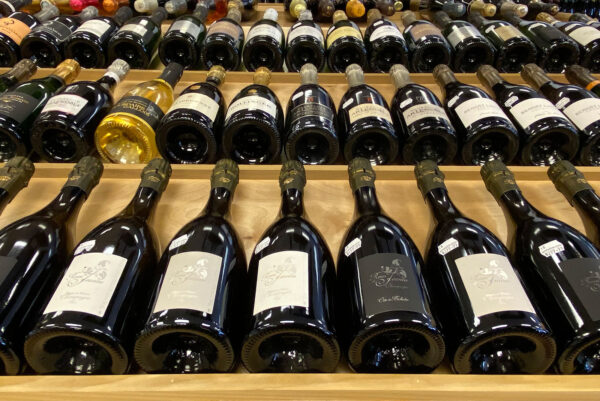
Rule number two: expect a wine to be shy within 24 hours of a storm, rain or snow, or turbulent weather. Like Willard Scott, I can tell if we will get any precipitation within 24 hours just by tasting wine. I have fascinated multitudes with my accuracy; it’s no parlor trick.
When a storm front approaches, a wine will close up or shut down, making the wine “less fruity” and much less enjoyable. Luckily there is a 1/2 remedy; open a bottle of 14.5% plus alcohol, or better still, a sparkling wine. Those wines are less affected; they will still be shy, but if you’re having a dinner party before a storm, you have an alternative, albeit an imperfect one.
My business partner Shem Hassen and I were in Issy-Les-Moulineaux, a suburb of Paris, to attend a tasting of 140 wines — we only had that day. We began the tasting with the tenth wine; we looked at each other and asked ourselves, “when is it supposed to start raining?” So we had four hours to kill.
We walked into a nearby Armenian Cemetery, looked at the tombstones, and paid our respects until the rain started. When we returned to the tasting, the wines had opened and tasted as expected. True story.
Cheers,
Doug Rosen
This sponsored column is written by the team at Arrowine & Cheese (4508 Cherry Hill Road in Arlington). Sign up for the email newsletter and receive exclusive discounts and offers. Experience Arrowine’s Tastings & Events. Have a question? Email thenose@
Few subjects provoke more angst than wine. For many, wine is a great mystery, a secret handshake, or a password. It doesn’t need to be.
My job with this bi-weekly column is to help you safely navigate the complex world of wine without intimidation or nonsense. You are in control.
If you take a moment and read my musings, hopefully you find them valuable, educational, practical and perhaps even entertaining. I will be trying to get you to engage and ask questions, make requests for future articles and reach out. I’m listening but know I’m an excruciatingly bad typist and have learned to use the fewest words possible for practicality’s sake.
Let me begin with a little about myself. I am 64 years old and have been in the wine biz since, and I hate to say it since 1977; I began my career in the very spot that Arrowine currently occupies. In those days, you “old-timers” out there might remember the “old” Cheese and Bottle.
I’m not just a fine wine retailer but also an importer within the confines of the laws of the State of Virginia. I have traveled extensively throughout France, Spain, Italy, Germany, Portugal, Austria, Hungary, Switzerland, The New Republic of Macedonia, Serbia, Greece, Israel, South Africa and Argentina in search of the best wines these places have to offer. I also hunt for “new-growers” whose work has yet to be discovered or who are not currently represented in Virginia or our region.
I proudly support Virginia’s Wine Industry. Did you know we are now the fifth largest producer of wine in the USA? Virginia Wine is no longer an oddity; we produce the best wine on the East Coast. And many Virginia wineries are “World Class!”
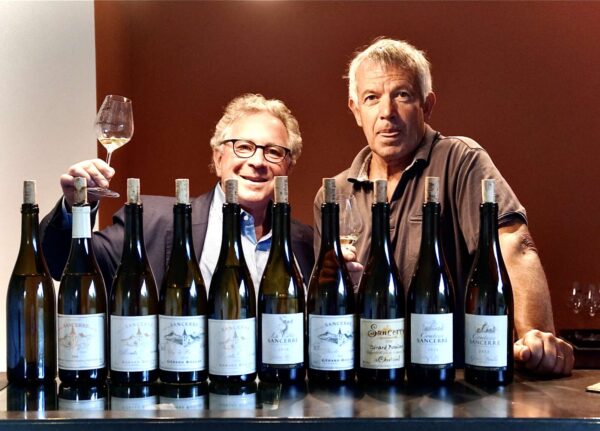
I have extensively traveled throughout Oregon. I’m long overdue for a California and Washington State road trip, but I have a store to run. Pre-COVID, I usually took six buying trips a year. That’s a lot of miles, moving daily, staying in small hotels with no elevator or A/C. And despite what people might think, crappy food. So I usually travel to the countryside, and there aren’t many resources in the middle of nowhere.
All that said, I wouldn’t change a thing. You need to go where the wine is! I’ve met many humble, hard-working families, men and women who are genuinely jack-of-all-trades; they grow grapes, transform the juice into something delicious, and then market it in many cases worldwide. They only get to practice their craft 40 or so times in a lifetime! So you have to be a quick study. How many occupations are this demanding?
I am the ambassador of these families. My job is to tell their stories and, when appropriate, convey how much risk there is at every step. A career in agriculture is like walking on a tightrope without a net. There is so much out of your control, precocious flowering and then a late frost that can wipe out your entire harvest, hail damage, too much rain or not enough, excessive cold or heat, insect infestations, wood diseases and the list goes on and on.
And then you have to ferment the juice and try to get it into the bottle without screwing it up. Sell it and hopefully get paid. Making wine from your own grapes is not for the faint of heart. Trust me!
Congratulations if you made it to the end of my ramblings, I have a secret to share with you. It is the one simple thing guaranteed to heighten your pleasure of drinking wine or anything else.
Never and I mean never, use glass without thoroughly washing with soap and water before using it! I’ll explain why in two weeks and give you a little experiment to perform at home.
Cheers,
Doug



